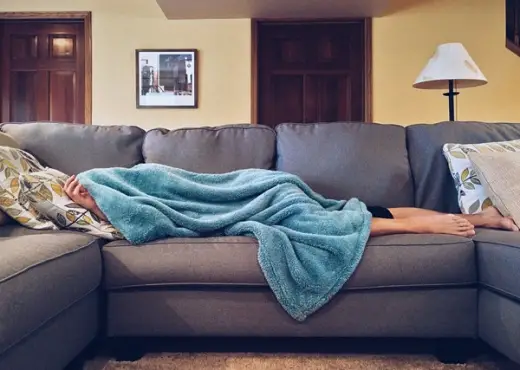Home soundproofing advice, Building sound limiting tips, House partition best practice
Soundproofing Your Life For A Quieter Life
16 November 2019
Home is where the heart is, true. But have you heard that your heart is where your life is? For people who desire a quiet and peaceable lifestyle, one of the ways to protect your life is to soundproof your home. Because the home is a collection of different individuals, each with their lifestyle and attitude, one of the worst mistakes you can make is to set “no noise” rule as one of the ground rules of the house. Except of course if all the home dwellers are adults with is not so likely. Even adults can be noisy when they want to be.

photo courtesy of article provider
Soundproofing Your Life For A Quieter Homelife Guide
Perchance the noise from your neighbor at night is driving you crazy at night? Take it firsthand that marching down their front step with an ax in hand is not going to solve any problem. Reasoning like adults might also not get you anywhere because sometimes they can’t help but make those noises that set you on the edge. The simple solution would be to soundproof your home. While many sites like soundproofpros.com offer insight on how to purchase some of the quietest gears to reduce the noise level from your home, there are still quite a few information out there that you are not aware of.
Sad, but true. But guess what? This article will set you on a different course by presenting more information about soundproofing that most people might not be aware of.
To achieve the level of quietness that you desire for your home, your soundproof design should be able to eliminate noises coming from the pipes, floor, garage, and the system itself with materials that absorbs noise. Before we get to that, let us try to understand how vibration works.
Noise and Sound
When objects vibrate or the air creates waves around objects, certain vibrations that are sensitive to our membranes are produced. Our ear picks up this energy through the eardrum and sends it to the brain who identifies the type of vibration we are hearing. The issue is, each sound has a unique signature, say unique qualities and wavelengths that make it different from the other. The wavelength and the surface they come in contact with determines to a large extent how loud the resonance will be. This is why many soundproofing techniques incorporate foams into their design to reduce vibration to the minimum.
Noise, on the other hand, is any type of vibration that distracts you from what you are doing unpleasantly. Because ceilings and walls are built and contain air, they amplify noise rather than reduce it. So to cut down on the noise level, you would need to reduce how noise is broadcasted from one room to another by making use of vibration-absorbing surfaces.
Materials that absorb room noise
As a rule of thumb, always bear it in mind that soft surfaces absorb vibrations and hard surfaces reflect them. Therefore, whatever material you wish to use to soundproof your home, let it be more of soft material and surfaces than the hard ones. Not that we’ve got that out of the way, there are certain materials are suitable for soundproofing some specific areas of the home.

photo courtesy of article provider
How To Soundproof Your Door?
Gaps in the door are like the passage through which vibration travel. Hence, to take care of this, you only need to seal the leaks that allow you to see the light through the door. To do this, you can install a solid wall, preferable weather-strip to reduce the noise level. Conventional doors are hollow on the inside and contain air which cannot reduce the noise level. You can also check out the solid wood, composite-core, and particleboard-core doors since they provide a better barrier compared to their hollow counterparts.
For DIY soundproofing, use a commercial grade door sweep with a thick rubber seal to seal the threshold. Apart from keeping out noises, it also takes care of bugs and dirt. You can weather-strip the top of the door with foam and seal the sides to promote easier door opening and closing.
Another way to block out vibrations from your door is to make use of heavy blackout curtains that can absorb noise when they are closed. You can also fill the gaps indoors with a draft stopper for effectiveness.
How To Reduce Floor Noise?
A thick rug pad is one of the most effective ways to block out squeaky noises coming from your basement. It is not enough to have a hard floor. You can combine a density rug pad to reduce the potential of vibration coming from the floor. For the area of the home where the wall is thin, you can introduce a bookcase or any other object with considerate mass to serve as the partition between the rooms. This is because items that have considerate mass reduce how sound is transmitted by resisting vibrations.
How To Soundproof Your Wall?
Soundproof curtains and acoustic panels are a few ways you can soundproof your walls. Acoustic panels, for example, can be hung on the wall. While some block out noise, others just prevent it from bouncing off hard surfaces. Each panel is made from sound-deadening materials and could absorb about 30 decibels of noise transmitted. Heavy-duty curtains also keep out outside noises by deflecting it back.
Window inserts are another way to block out the distraction without blocking out the scenery. The panes are made from acrylic or clear glass and can be installed over an existing window. By design, the glass is designed to be a seal that is capable of reducing incoming noise by more than 50%. You can easily remove them when you don’t need them and open your window for a little bit of fresh air.
Conclusion
Since noises reflect off hard surfaces, the best way to reduce the reflections is to cover your home in soft materials. Noise is like an infringement on your privacy. A situation that will continue if you let it persist. Adopt a soundproof solution today to achieve a little bit of quiet in your home. Click here to learn more about how to do the same for your ceilings and walls.
Comments on the Soundproofing Your Life For A Quieter Life advice article welcome
Architecture Design
Major Strathclyde Building Designs – selection:
Historic Glasgow : best Glasgow architecture of the past
Comments / photos for the Soundproofing Your Life For A Quieter Life page welcome
